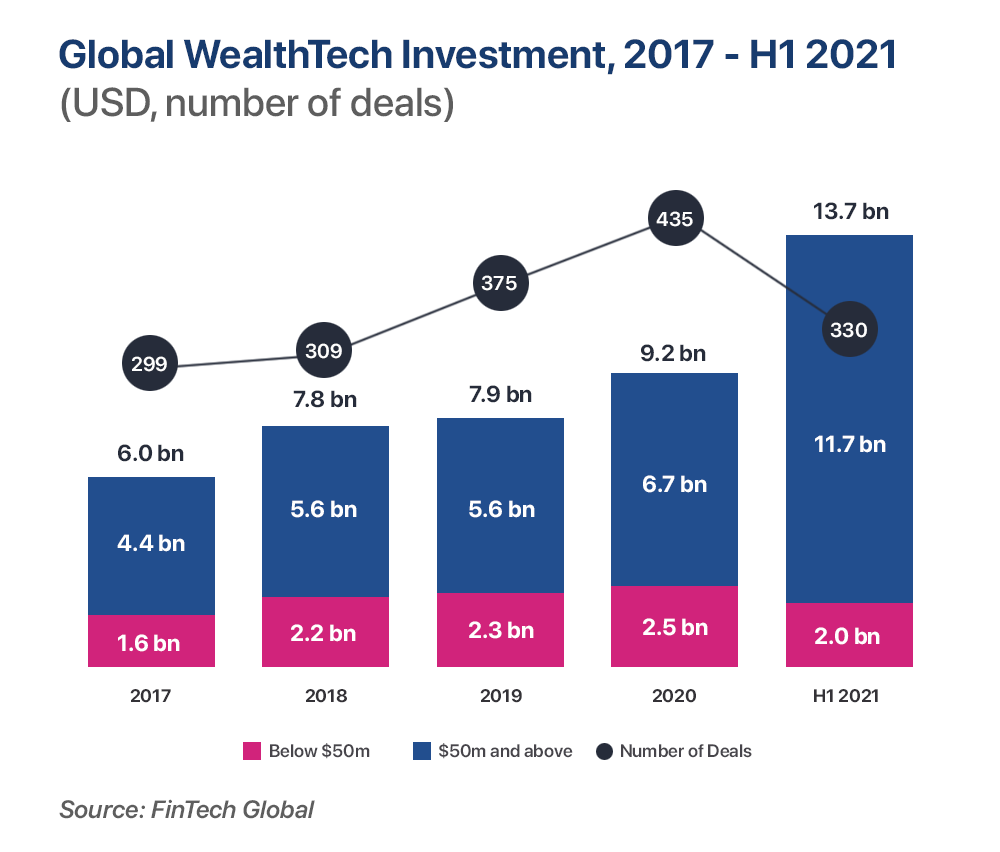What is the future of Tech in Wealth Management?

Wealth Tech, or the practice of combining wealth and technology to improve personal (and professional) wealth management and investing with digital tools, has grown by leaps and bounds in recent years. As a result, wealth management, in particular, and the financial industry as a whole have been changed in several ways. Platforms that use emergent technologies like AI and ML bring a natural and cost-effective alternative compared to traditional wealth management firms.
Personalization seems to be one of the most important keys to success in the financial advisory business. People have feelings and worries that need to be dealt with, which is something no machine can do successfully.
The Growth of Wealth Tech
Wealthtech isn’t a new thing. Some kinds of technology for managing wealth have been around since 2008. But since then, interest in the industry and the number of people using it have gone through the roof. Wealthtech companies raised $6.6 billion in just the first quarter of 2021. This was done through 162 transactions. The overall funding went from $6.1 billion to $9.3 billion by the year-end.
Even though there is no one way to get to the future, many things will help shape it. Here are some of these current trends.
Blockchain
There are many good things about the use of Blockchain in WealthTech. Blockchain was made to keep transaction data safe, and it can’t be changed or used for fraud. Its skills are beneficial for allocating assets, rebalancing ETFs, and doing other things. This technology could change the wealth management business in a big way.
Cloud Computing
A WealthTech ecosystem is a group of tech start-ups and people who work in the wealth management business. The trend is toward coordinated collaboration. JP Morgan bought Nutmeg and Finantix. The boom signifies a more significant shift in both culture and technology. WealthTech is making investing more accessible and getting positive feedback in a world where millennials are taking over traditional investing.
Digital Brokerage
Social investing is a popular way to use a digital brokerage. It lets you see the investments of people you follow in your trading network, just like how you can follow people on Facebook. Platforms like eToro and Robinhood offer services that make it easy for regular investors and businesses to get stock market information and investment opportunities that would typically only be available to certified investors.
Robo Advisors
The popularity of Wealth Front and Wealth Simple is evidence of a growing trend of Robo-advisors. These automated services empower people to invest by using algorithms and machine learning. More than only investment opportunities, these applications factor in a user’s wealth goals, risk appetite, and life situations to compute accurate advice. Often working as real-life financial advisors, Robo-Advisors, see large-scale adoption worldwide [200 registered companies in the US alone].

Bringing it together,
For the FI’s to consolidate gains and build more on the WealthTech advantage, a few strategic initiatives are a must. The first is to keep improving the customer experience that meets changing needs. Secondly, using data-based recommendations can help build stronger relationships with clients. And finally, investing in cybersecurity to deal with the increasing risk in vulnerable climates.
View














